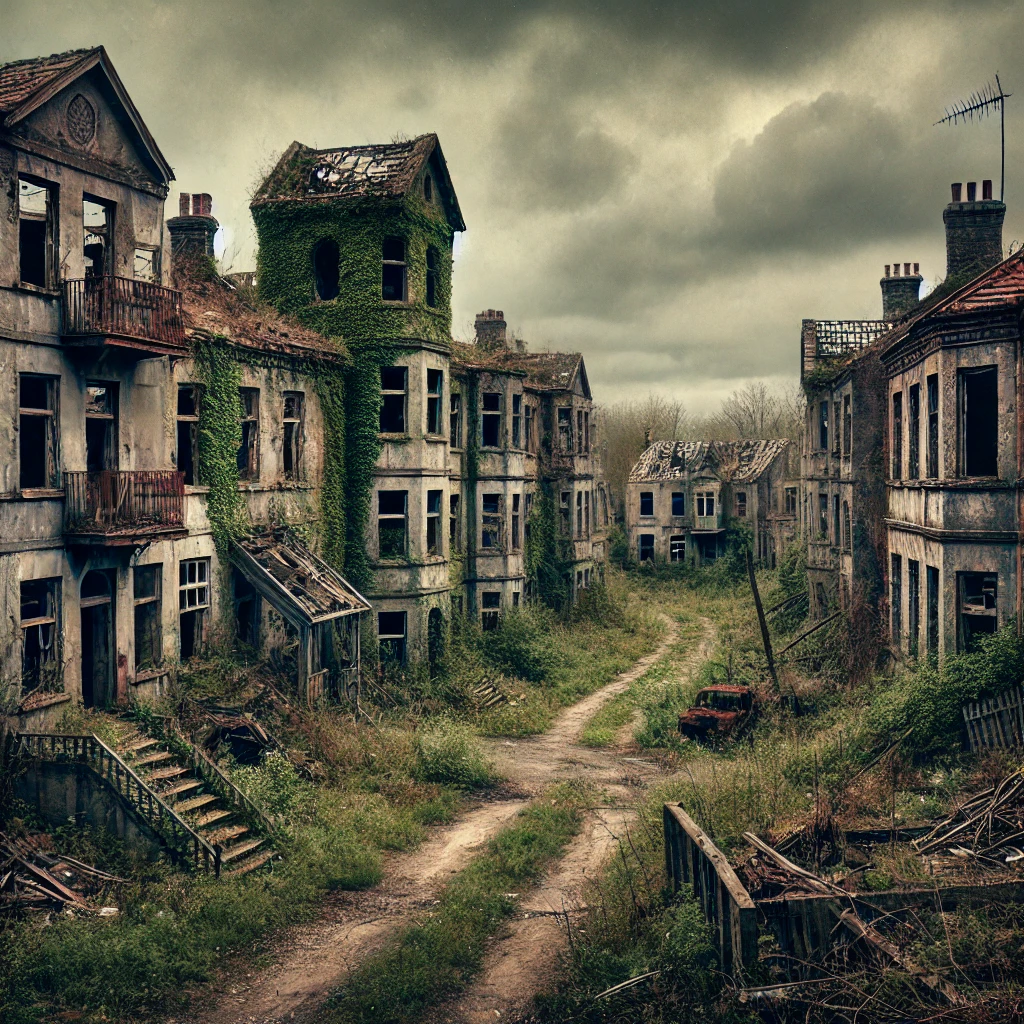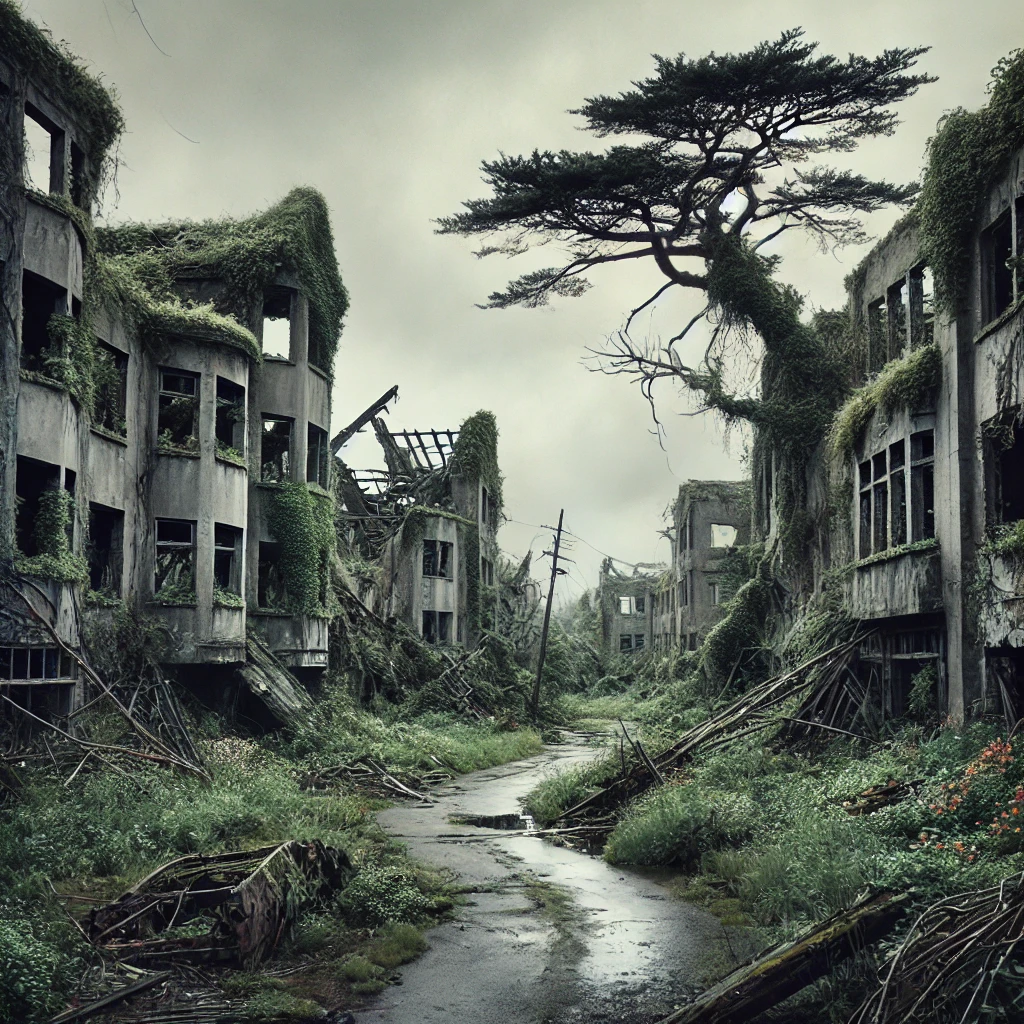Abandoned cities: how did history leave them empty?

- Why do abandoned cities become tourist attractions in our time?
- Why do new cities remain uninhabited after construction?
The abandoned town of Bodie in California
In the state of California, USA, there is a famous abandoned settlement called Bodie. Currently, only one-fifth of the original buildings that existed here in the 1880s can be seen. During the gold rush, the population of this town reached around 10,000 people.
In Bodi, there were not only residential buildings, but also:
- two credit organizations,
- train station
- correctional facility,
- 65 drinking establishments,
- several temples,
- an area populated by Chinese migrants with a Taoist temple,
- seven breweries.
That period was vibrant with life — newspapers were published that enriched the daily lives of the townspeople. However, with the arrival of the year 1900 and the drop in gold prices, the population of the city began to rapidly decline. In 1932, a terrible fire struck Bodie, which almost completely destroyed the central part of the settlement.
Tourism in Bodhi
In modern times, this place attracts crowds of tourists, especially during the summer. Due to the unique climate, the buildings in Bodie seem to have been preserved, as if time stopped here a hundred years ago. Currently, about 170 structures remain, including:
- church,
- educational institution,
- bank,
- bar,
- store
- administrative building of the mine.
Kolmanskop in Namibia
Off the coast of Namibia, in the Namib Desert, there is another interesting abandoned settlement —KolmanskopIt was founded by German colonists in 1908 after the discovery of diamond deposits. The city had all the amenities for a comfortable life:
- bowling,
- casino.
Drinking water was supplied here from Cape Town, which is thousands of kilometers away. However, in the 1950s, when the diamond reserves were depleted, Kolmanskop began to decline, and today almost half of its area is buried in sand.
Hashima Island in Japan
In the south of Japan, in Nagasaki Prefecture, there is an uninhabited island.Hashimawhich was once one of the most densely populated places on the planet. During the peak of coal mining, the island, which covered just 6 hectares, housed 5,300 people. There were homes, educational institutions, shops, and even a medical facility.
The island has experienced two major tragedies:
- During World War II, he was accidentally shelled by American troops, who mistook him for a warship.
- By the 1970s, the demand for coal had decreased, leading people to start leaving Hashima.
The last inhabitants left the island in 1973, and for a long time it remained closed to visitors, but since 2009, tourists have been able to visit the site again.
Ordos in Inner Mongolia
Ordos in Inner Mongolia is also one of the largest ghost towns in China, having fallen victim to a construction boom. About 20 years ago, this area gained popularity due to a boom in the coal industry, which attracted numerous companies.
Local residents, hurriedly selling their plots, quickly became wealthy. The constant movement of trucks ensured the removal of coal. Thus, the old city of Ordos received financial inflows and looked forward to a bright future. However, years went by, and many buildings remained uninhabited, creating an atmosphere of abandonment.
These vacant places now remind us of former grandeur and immerse us in the spirit of historical heritage, prompting reflection on how quickly and irreversibly changes can occur in human life.
Problems with new cities
At a certain point, the local authorities initiated the creation of a new settlement capable of accommodating hundreds of thousands of people. However, as practice showed, five years after the construction began, this place remained deserted, as there were no buyers.
The story of Belchite
The settlement of Belchite in the Spanish province of Zaragoza became the site of one of the most iconic battles in the country's history. At different times, fierce battles took place here between Republicans and Nationalists. In August and September 1937, at the height of the Civil War, the village was almost wiped off the face of the earth. Subsequently, this area was turned into a memorial, symbolizing the tragic events of those years.
The new Belchite was built near the destroyed village, and its ruins became famous as the backdrop for iconic films, including:
- “The Adventures of Baron Munchausen” directed by Terry Gilliam
- “Pan's Labyrinth” by Guillermo del Toro
Oradour-sur-Glane
Oradour-sur-Glane, located in the French region of Limousin, was a peaceful and fairly prosperous village until June 1944.
9 October 2024
9 October 2024
29 September

Currently, only ruins and burned cars remain in Oradour-sur-Glane. Nearby, a new settlement has been built, serving as a replacement for the destroyed one.
Varosha in Cyprus
Varosha, a part of the city of Famagusta in Cyprus, was very popular with tourists in the 1970s. Among those who vacationed here were celebrities such as:
- Elizabeth Taylor
- Richard Burton
- Raquel Welch
- Brigitte Bardot
The country was vibrant with hotels, bars, restaurants, and nightclubs. But on August 15, 1974, after two years of peaceful life, a Turkish intervention occurred here. The residents were forced to leave their homes, and Varosha came under control that continues to this day. During this time, the resort fell into decay: buildings are crumbling, and nature is beginning to reclaim the streets.
Agdam in Azerbaijan
Agdam, located in the southwest of Azerbaijan, once had a population of nearly 150,000 residents. However, after the outbreak of the Nagorno-Karabakh conflict in 1993, the city was abandoned as its inhabitants were forced to leave their homes, and then Armenian troops took control of the area. Centuries-old trees were cut down, and orchards were devastated.
In our time, Agdam is just a collection of ruins, with only the local mosque remaining, located in the center of this abandoned area.
The city of Krakow in Italy
The town of Craco in Italy was founded between the 8th and 6th centuries BC. Starting in 1963, landslides occurred regularly here, and by 1975, the population had left Craco in search of safety. The haunting appearance of Craco has inspired many directors, and this town has become the setting for numerous films, including:
- “The Passion of Christ”
- “Quantum of Mercy”
- “King David”
- “Saving Grace”

Conclusion
In conclusion of my research, I want to draw attention to the incredible story that each of these abandoned places carries within it. Bodie, Kolmanskop, Hashima, Ordás, Belchite, Oradour-sur-Glane, Varosha, Agdam, and Krako — each of these towns or settlements was once full of life, dynamism, and hope. But circumstances, often unpredictable and harsh, put an end to their prosperity.
The body I mentioned at the beginning serves as a reminder of how quickly the primal spirit of biking can fade, suddenly leaving a void where the rhythm of life once was. Kolmanskop and its pearls, like bowling and casinos, now buried under sand, become a metaphor for missed opportunities and lost dreams. And Hashima, once densely populated, now lies in silence, as if nature itself has reclaimed its rights when the coal saga came to an end.
Parallels between ghost towns
The ghost town of Ordaz, once shining like a new day, now stands empty simply because the dream of its great future did not come to fruition. The same can be said for Belchite, whose history was scorched by war, leaving only ruins and memories. Oradour-sur-Glane continues to serve as a reminder of the horrors of war, while Varosha pleads for the return of its former guests — hoping that one day the resort can restore what it has lost.
Agdam and Krako, in turn, show us that nature can be relentless, taking with it not only the ruins of buildings but entire cultures. In their destruction lies a captivating beauty — a beauty that was once a symbol of human ambition, now highlighting the fragility of our existence.
Lessons from history
As I explore these myths about lost places, I am filled with respect and understanding for how history can turn prosperity into dust and memory. These ghost towns remind us of the importance of preserving the moments that shape our society, and that even through ruins, we can draw lessons for the future.
Therefore, I hope that when visiting such places, we will not only admire their beauty or mystery but also reflect on the value of life and the moments that can be lost forever.
Comment
Popular Posts
9 October 2024
1485
9 October 2024
9940
29 September
377
Popular Offers

Subscribe to the newsletter from Hatamatata.com!
Subscribe to the newsletter from Hatamatata.com!
I agree to the processing of personal data and confidentiality rules of Hatamatata











